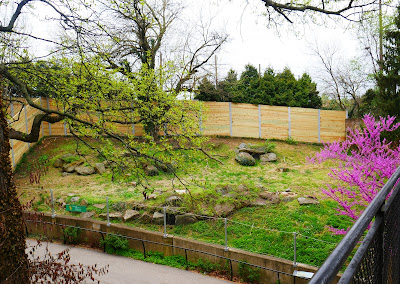The Philadelphia Zoo, as America's First Public Zoological Park, has a very interesting history. It was founded on an estate that was founded by John Penn, a grandson of William Penn the founder of the colony of Penn's woods, a.k.a. Pennsylvania. The estate was called the Solitude for its location outside of the city proper along the banks of the Schuylkill River.
Over time, the estate, turned into the Philadelphia Zoo, became encapsulated by infrastructure. Now, between the zoo and river are a trio of roads: Interstate 76, Martin Luther King Jr. Drive, and North 34th Street. The Zoo's 42-acres form a bubble to the west that are enclosed by several railway tracks including those used by local commuter trains and Amtrak. A unique history created a unique space and gives way to unique design limitations. While many other zoos have room to grow, the Philadelphia Zoo only has the space it has. Ergo efficiency of design is a critical aspect of its campus and any future growth. As we've seen, one of those unique innovations is their Zoo360 habitat-trails.Now, this might give you the impression that the Philadelphia Zoo is small. That is not true. 42 acres well designed can feel like so much more.
On my first visit so long ago it was before GPS on smart phones. When my friends and I arrived we weren't sure who to get in, where to park, etc. None of us had been there before. It was a summer Saturday and the place was packed, even by 10 AM! We eventually found a place on a service road that runs around the west side of the zoo next to the railroad. We entered through the south entrance, now closed to the public. The first thing I saw was a Camel ride (no longer part of any accredited zoo) and a Red Panda in a wood frame habitat that was more like a cage than a place to thrive. The place has come SO FAR in the past 20 years!
And yet, the south end of the zoo remains an area ripe with potential. Over the years, while Camels have gone and Red Pandas have been given a new amazing home, the south loop never seems to find its focus. At one point, a multi-storied habitat was home to a colony of Colobus Guerza monkeys, now they reside at the Primate Reserve. At another point, Maned Wolves. Now not. A large habitat for American Bald Eagles popped up. On this trip the space was empty, the wire mesh torn away... Through it all a pair of Cheetahs (B) has held reign at the very back perimeter. It's a bit of a hike just to see two Cheetahs. On this trip a new habitat with some larger birds (A) was established adjacent to the still empty Colobus tower.
New walkway at the new large bird habitat.
Crested Caracara
Caracara cheriway
Habitat formerly used by Maned Wolves, now identified as a Ground Hornbill home.
Large Cheetah Habitat.
Cheetah
Acinonyx jubatus











No comments:
Post a Comment